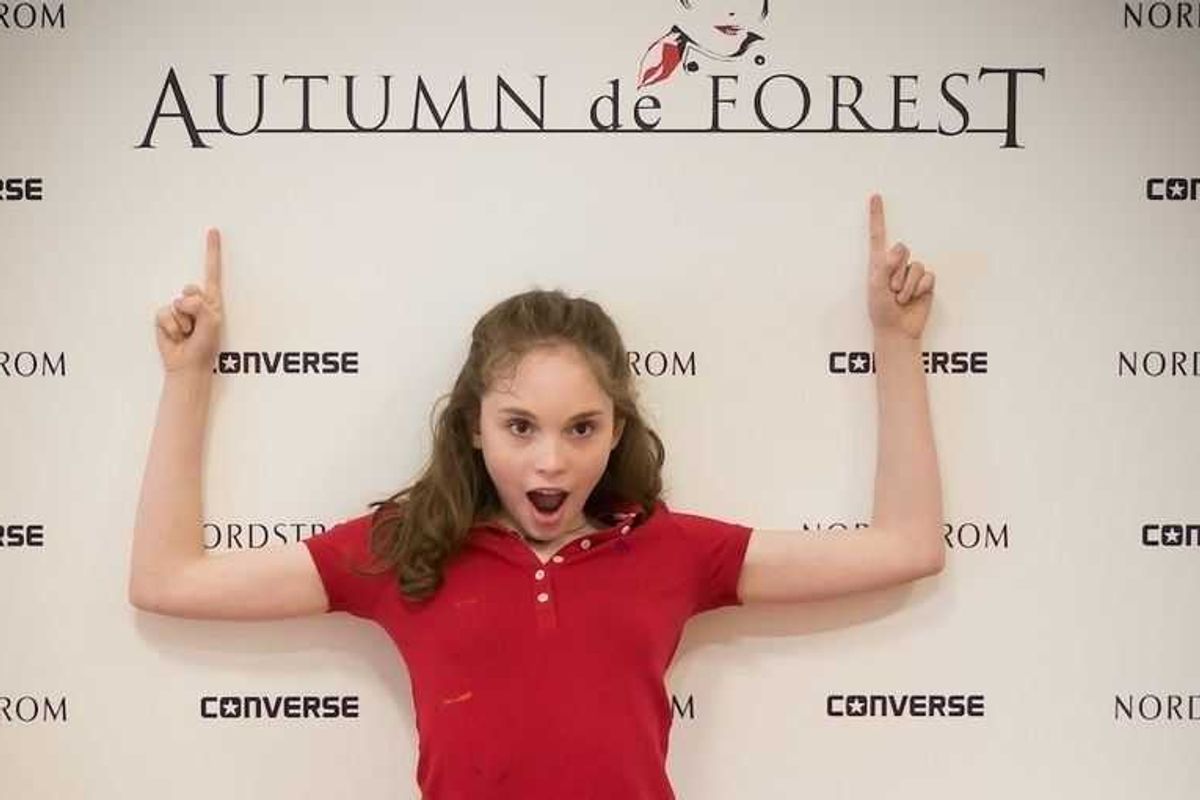Today is Charles Darwin's 207th birthday! Darwin, who famously wrote "On the Origin of Species," the book that introduced much of the world to evolution and the theory of natural selection, didn't just write about animals. He also kept quite a few of them as pets, including several dogs, a tortoise (kind of), and pigeons.
Just like Darwin, Mother Nature shares her home with some interesting animal companions. And if you squint, you can see the resemblance they have to more familiar animal faces.
So in celebration of Darwin's birthday and his pets, here are 10 cool animals that don't look exactly like your domesticated Fluffys, Pollys, and Rexes but just might be related to them.
1. Your fluffy house cat may be related to the smilodon.
Image from Sergio De la Rosa Martínez/Wikimedia Commons.
Smilodon! One of the fabled saber-tooth cats. They lived up until about 10,000 years ago in North and South America.
2. And your dog has some family to match — dire wolves.
Image from Sergio De la Rosa Martínez/Wikimedia Commons.
Yeah, George R. R. Martin didn't just make up House Stark's emblematic animal out of whole cloth. Like the smilodon above, these guys roamed up until about 10,000 years ago. While superficially similar to modern wolves, your average dire wolf would have weighed about 25% more.
3. But it's Lamb Chop's cousin you have to really watch out for.
Image from Boris Dimitrov/Wikimedia Commons.
What do you get if you cross a sheep with a wolf? This guy! He's an andrewsarchus, and though he might look more like some kind of prehistoric hyaena, evidence suggests he belongs in the same order as goats, sheep, and deer.
4. Babe's cousins are no slouch either.
Image from Heinrich Harder/Wikimedia Commons.
And people think warthogs are ugly! These distant relatives of pigs, known as entelodonts, lived about 33 million years ago.
5. Think your brightly colored, talkative parrot is a handful? Try sharing your home with Haast's eagle.
Image from John Megahan/Wikimedia Commons.
This featured creature also has the distinction of being the only thing on the list to have lived in modern times – up until the year 1400. The species lived in New Zealand, where it preyed on the giant, flightless birds known as moa. They may even be the giant man-eating birds of Maori legend!
6. The creature in this illustration is related to today's horses. Really, I swear. I'm not making it up.
Image from Jay Matternes/Wikimedia Commons.
Though they might look more like a gorilla (or Joe Camel) than Black Beauty, these are in fact distant relatives of modern horses known as chalicotheres. They died out about 3.5 million years ago.
7. This massive titanoboa just wants to give you a hug.
Image from Ryan Somma/Flickr, taken at the Smithsonian Natural History Museum.
Yes, that is a snake big enough to eat a crocodile. Titanoboa lived about 60 million years ago, at a time I imagine it must have ruled the post-dinosaur world.
And sorry, Potterheads, but as far as history and science are concerned, there is no record of one of these behemoths living in a Chamber of Secrets below a magical school, and though titanoboas aren't around today, no, they weren't wiped out by a messy-haired, bespectacled pre-teen wizard stabbing a dusty old diary with a fang either.
8. Your goldfish dreams of life as a megalodon.
Image from Karen Carr/Wikimedia Commons.
Megalodon is not just the star of bad science fiction movies! The megalodon really did munch its way through the ocean from about 16 million to about 3 million years ago. If your goldfish could LARP, it'd probably go as one of these toothy giants.
9. Even turtles have some impressive relatives in their family trees.
So, yes, there are more lifelike drawings of this massive turtle known as archelon, but you really gotta check out the size of this thing. Archelon lived about 80 million years ago and must have weighed at least two tons. And it had an even larger cousin — stupendemys!
Finally, I'm so sorry, but I have to include at least one huge bug on this list. Look away now if you hate creepy crawly critters.
10. This is a pulmonoscorpius.
Some people like to keep scorpions as pets, but even they would probably think twice before adopting pulmonoscorpius.
The thing was more than two feet long! Luckily, of all the creatures on this list, we're the furthest away from the time that spawned this massive bug — the species died out over 300 million years ago. Thank goodness.
It might be hard to imagine trying to keep any of these creatures as a pet. But, Fluffy and Rex aren't the only animals with weird cousins.
After all, it's not too long ago that we looked like this ourselves:
A reconstruction of homo habilis. Image from lilyundfreya/Wikimedia Commons.
Everything on Earth is, ultimately, related to each other. That's one of the greatest ideas that Charles Darwin handed down to us. Humans, animals, even our pets. We're all one big, weird — sometimes incredibly weird — family.
And if homo habilis up there is what we looked like 2 million years ago, what are we going to look like 2 million years in the future? Maybe we'll out-weird them all.



 TikTok · Ale
TikTok · Ale
 Autumn created this piece when she was just 5 years old.Autumn de Forest
Autumn created this piece when she was just 5 years old.Autumn de Forest  Autumn de Forest paints Autumn de Forest
Autumn de Forest paints Autumn de Forest  An Autumn de Forest paintingAutumn de Forest
An Autumn de Forest paintingAutumn de Forest 
 Autumn de Forest stands with the Pope who looks at one of her paintings Autumn de Forest
Autumn de Forest stands with the Pope who looks at one of her paintings Autumn de Forest 

 Kittens are the cutest.
Kittens are the cutest.  Grrrr, wook at his widdle paws and his widdle whiskers.
Grrrr, wook at his widdle paws and his widdle whiskers. 
 Bluebells at the Brooklyn Botanical Gardens.
Bluebells at the Brooklyn Botanical Gardens. 